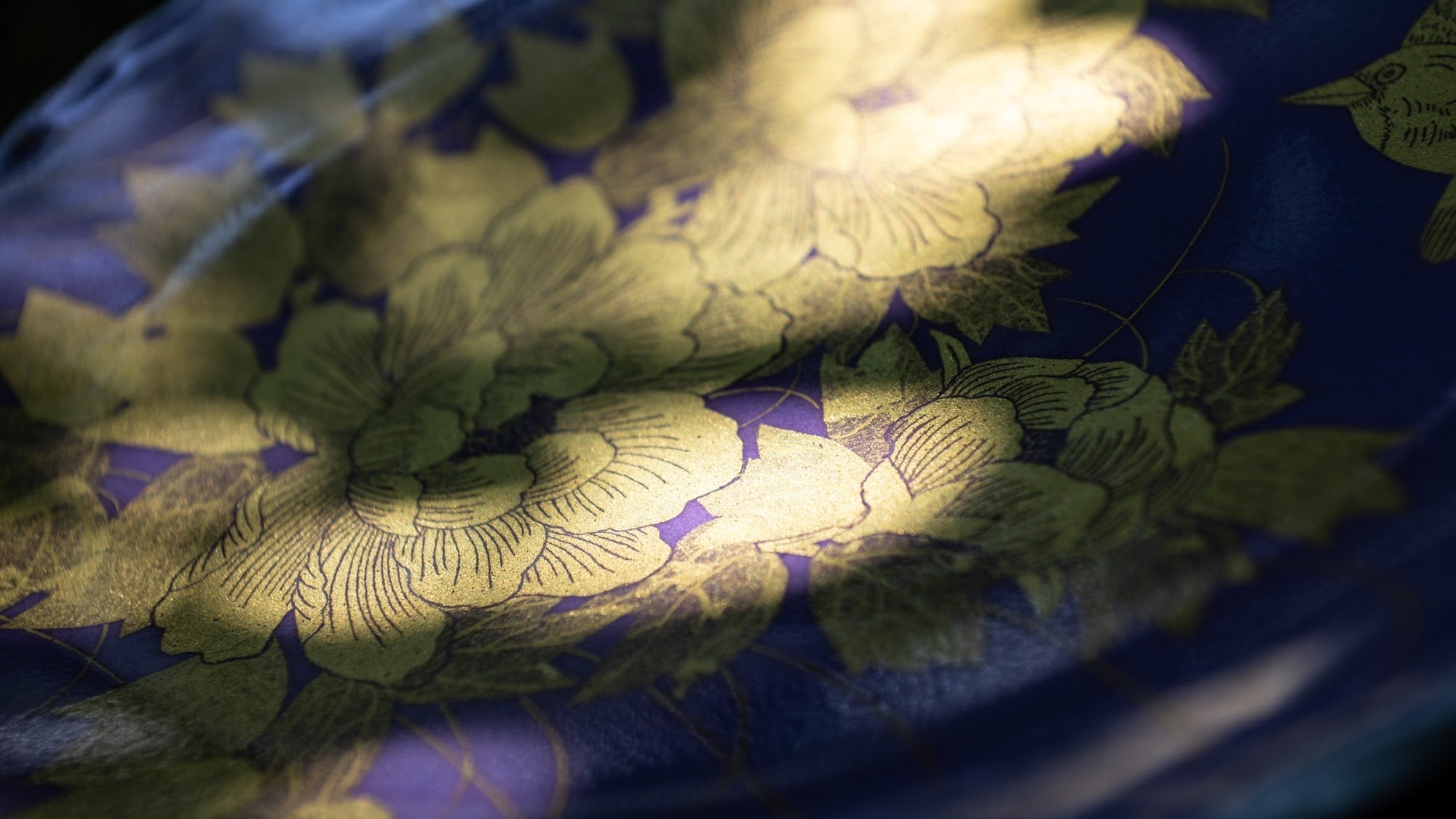










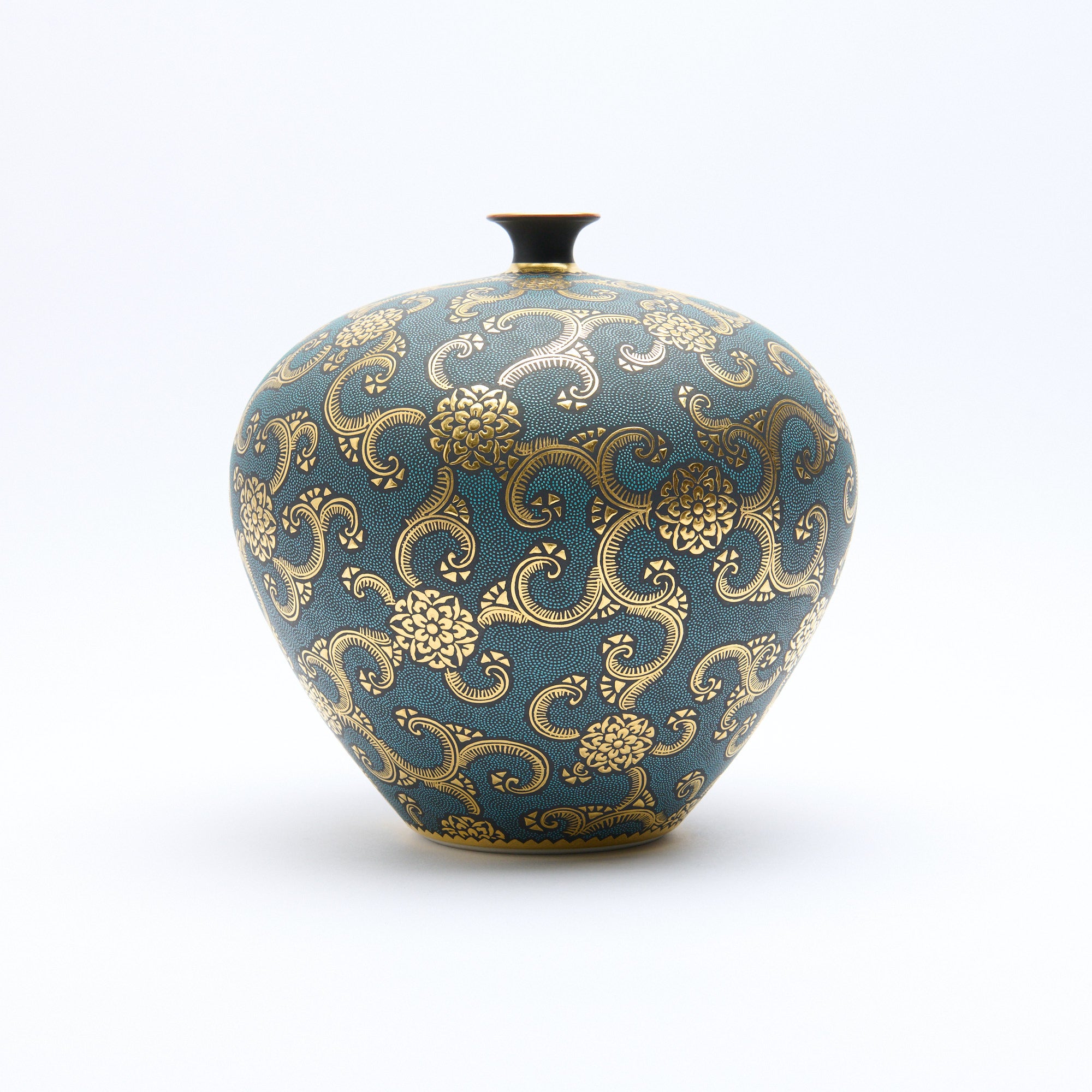



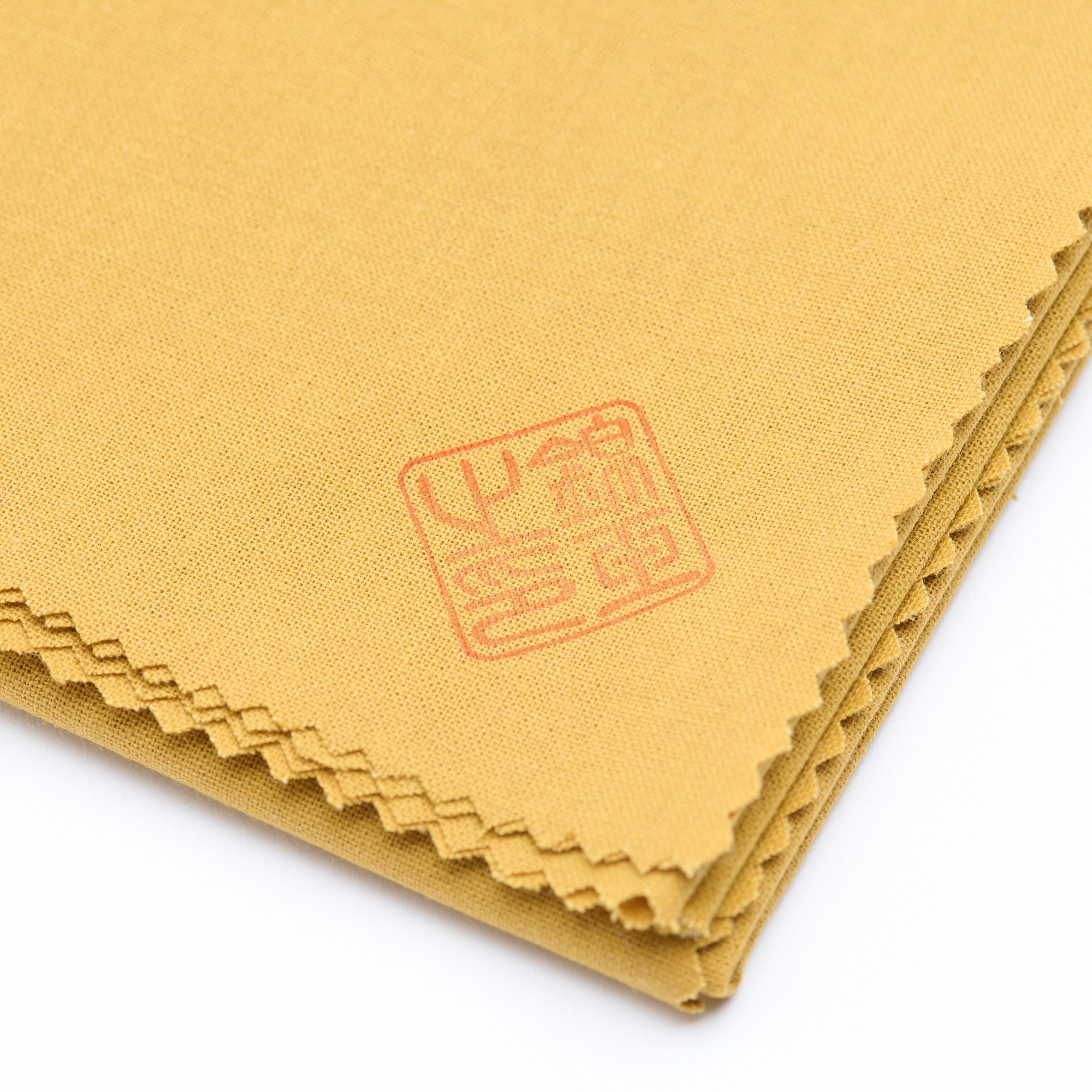

Morikin Floral Arabesque Aochibu Round Vase
This product is currently available exclusively at Otonami Lounge Tokyo on the 10th floor of Daimaru Tokyo Station.
The Morikin Floral Arabesque Aochibu Round Vase is a masterpiece where ancient techniques of morikin "raised gold" and aochibu "blue dots" converge in an exquisite display of artistry. The surface bursts into life with an array of minute blue dots, meticulously applied with an icchin, a dispenser with a fine tip, showcasing an unparalleled level of dedication and precision.
Adorned with delicately layered, petal-like hosoge—a stylized floral pattern derived from the arabesque design—this motif was widely used during Japan’s Nara (710–794 CE) and Heian periods (794–1185 CE). It is beautifully complemented by the gold embellishments of morikin, intricately rendered on both the floral hosoge motifs and the flowing arabesque lines that gracefully wrap around the vase.
The dynamic visual rhythm created by the aochibu dots, enhanced by the depth and texture of morikin gold, showcases Nakada Kingyoku the Third's commitment to bridging traditional techniques with contemporary creativity. This vase offers a fresh perspective on timeless design, respecting the legacy of Kutani ware while pushing the boundaries of ceramic art with a bold spirit of innovation.
DETAILS
| Quantity | 1 vase, 1 wooden plaque |
| Size |
D 21.0 cm (8.3 in) x H 20.5 cm (8.1 in) [size of opening] D 1.5 cm (0.6 in) [Wooden Box] D 26.0 cm (10.2 in) x W 26.0 cm (10.2 in) x H 28.0 cm (11.0 in) |
| Weight | 1,780 g (62.8 oz) |
| Material | Porcelain |
| Package Type | Wooden box |
Maker / Brand
Nakada Kingyoku's work embodies Rimpa Artistry with its dignified elegance and graceful beauty. He harmonizes the interplay between space and miniature craftsmanship, combining modern sensibilities with meticulous techniques through the artistry of blue dots and raised gold. His work not only pays homage to his inherited heritage but also introduces innovations to elevate the aochibu style.
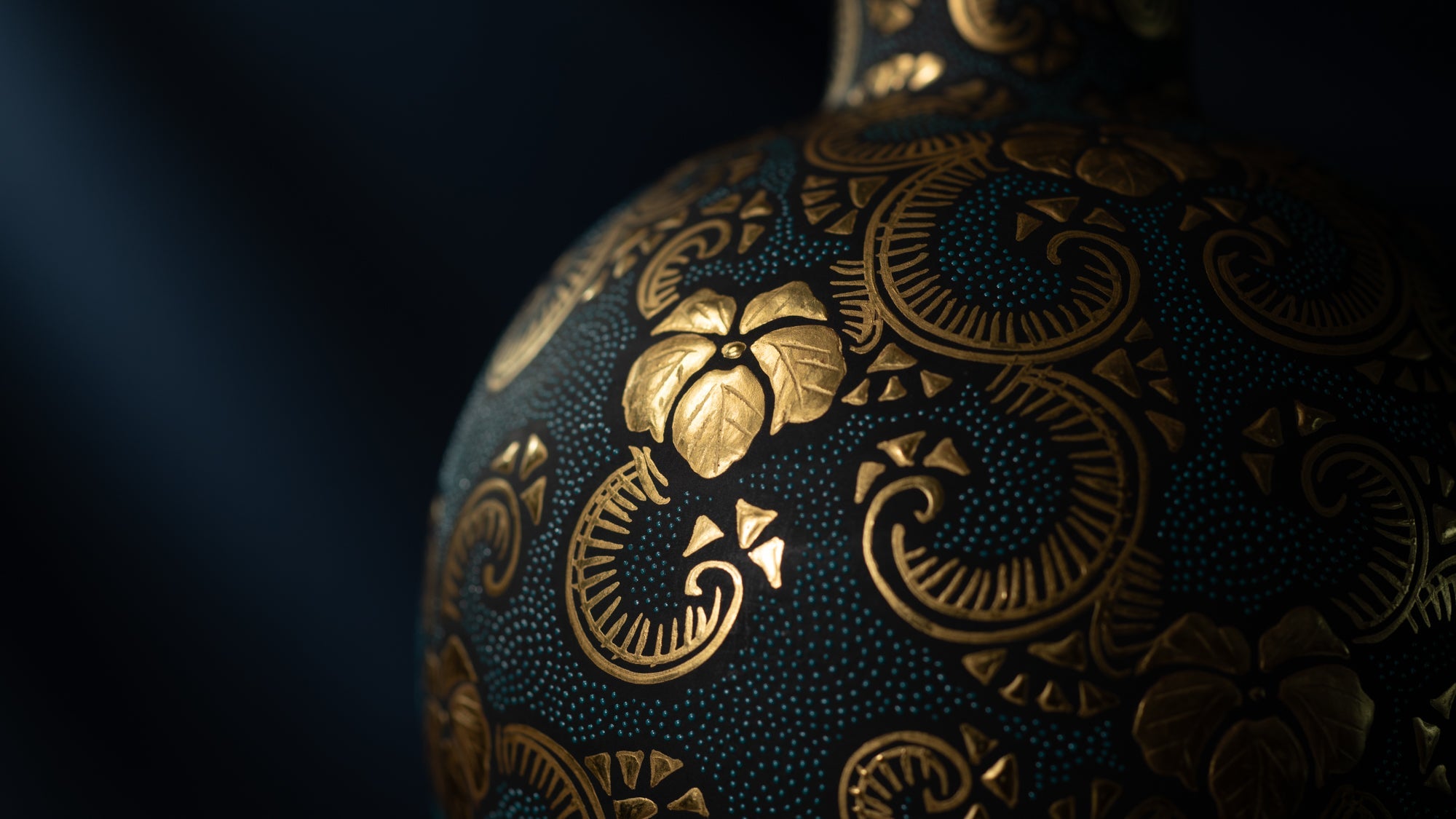
Crafts
Kutani ware is a pottery produced in the Kaga region of Ishikawa Prefecture, with a history spanning over 350 years. It is characterized by the heavy brilliance of the five colors of navy blue, red, purple, green, and yellow that are applied to the bold and daring lines. Its long history has evolved through the tireless efforts and enthusiasm of people who have sought innovation while maintaining tradition.
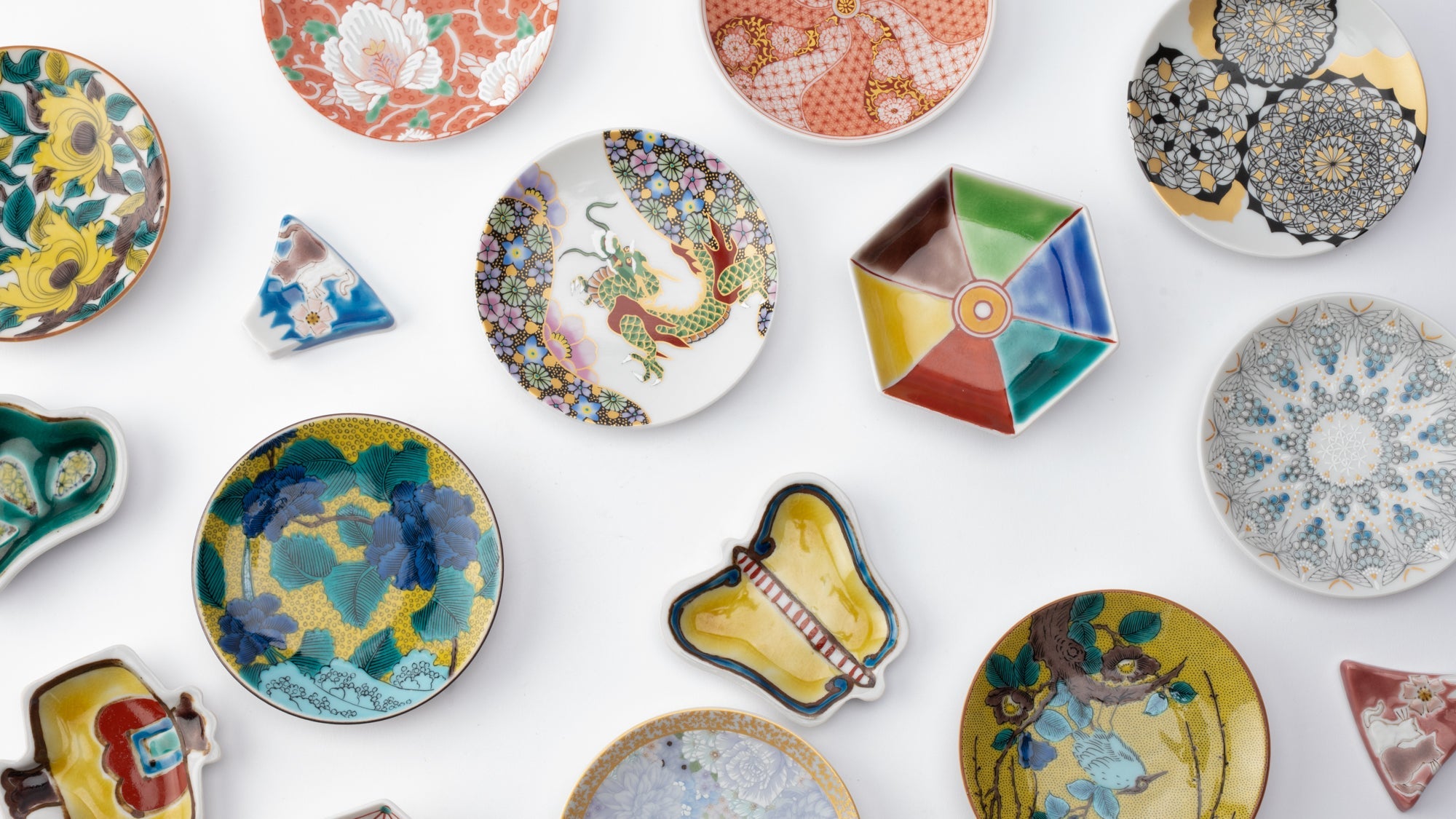
Choose options

















About Artist
Musubi Gallery
Since its inception, MUSUBI KILN has strived to introduce the world to the finest traditional crafts from masters all around Japan.
Here, in the Gallery, we seek to showcase the highest echelon of traditional techniques passed down through generations. You can discover works from masters who have not only perfected those methods, but added their imagination to innovate the craft even further.
Some of these masters have even been named Living National Treasures, a title bestowed upon them by the Japanese government to formally recognize their contribution to crafts and culture — thereby cementing their legacy and making them an important part of art history.
Each piece is meticulously handcrafted over many months to create a timeless treasure that's unlike any other. And when it's in your home, you, too, will become part of that history.
Welcome to the Gallery. Please, peruse at your leisure.
